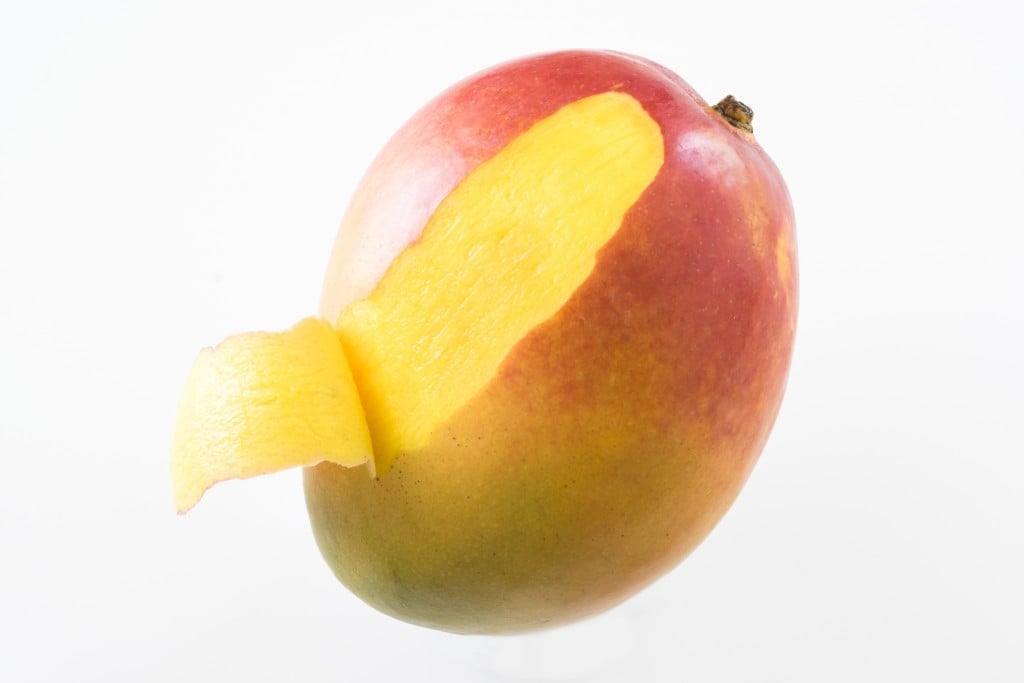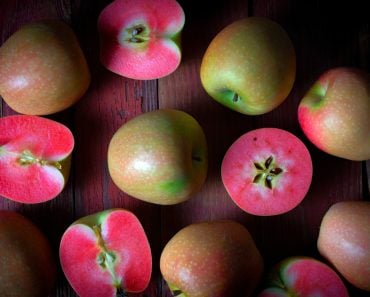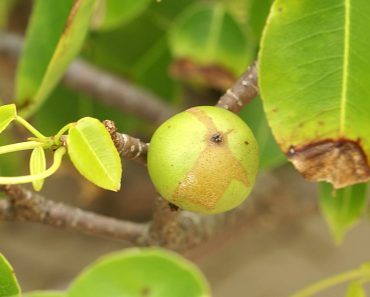Table of Contents (click to expand)
Too tired to read? Listen on Spotify:
Mango peels are edible, but do have certain compounds, such as urushiol, that can cause an allergic reaction in certain people. The peel has a higher nutrient profile for certain vitamins and antioxidants than the flesh, but it is bitter and tough to chew.
When it comes to eating fruits, there is an incredibly wide variety. We can bite into apples and grapes, skin and all. We know that the skin is often more nutritious than the flesh. On the other end of the spectrum, we peel bananas and pineapples away from the tough, inedible skin before we eat them.
 In the middle of this range, however, are slightly more difficult to classify fruits. The skins of these fruits are edible, but most of us prefer to avoid them if we can. Mangoes land in the middle of this range, and there are several factors to consider before deciding to chew into one of these tropical treats.
In the middle of this range, however, are slightly more difficult to classify fruits. The skins of these fruits are edible, but most of us prefer to avoid them if we can. Mangoes land in the middle of this range, and there are several factors to consider before deciding to chew into one of these tropical treats.
Recommended Video for you:
Is Mango Skin Toxic?
While mango skin isn’t considered dangerous to eat, it does contain a few compounds that can cause an allergic reaction in some of us. One toxin is urushiol, the same chemical in poison ivy that causes a rash when we touch the plant. While the amounts of urushiol in the skin of mangoes are quite small, if you are sensitive to this compound, it can cause inflammation and gastrointestinal discomfort.
Mango peel also contains a group of compounds collectively called mangol that have also been found to cause an allergic reaction in certain people.

Nutrition In Mango Peels
Aside from allergens, however, the mango peels are rich in antioxidants, such as polyphenolic compounds and carotenoids, the latter of which is partly responsible for the color of mangoes. Many of these antioxidants help to reduce oxidative stress, and some evidence finds that they might protect against cancers and heart disease.
In addition to the beneficial antioxidants, studies have also found high levels of vitamin C, vitamin E, and dietary fiber in the peel, which can aid in maintaining your immune system, skin health, and gastrointestinal functions.
Is Mango Skin Good To Eat?
The question of whether or not it is safe to eat mango skin should be preceded by the real question—is eating mango skin even worth it? Not only is there the chance of a negative allergic reaction to the compounds in the skin, but the skin also has a slightly waxy and rubbery feel, as well as a bitter taste, which may be stronger or weaker depending on how ripe the fruit is. The fibrous nature of the skin also means that you’ll be chewing it for a while, as opposed to the tender, sweet, and delicious flesh of the fruit.
If you are determined to get all the nutrients out of your mangoes, you are welcome to try preparing them in various ways to reduce the bitterness and tough fibers. Cooking them down with other fruit into syrup is one way to utilize the peels. Also, unripe mangoes are often eaten, peel and all, as they aren’t as tough at this point in development and lack the bitter flavor. However, the fruit is also less pleasant to eat in this unripened stage.

Additionally, you may not want to eat mango skin unless it is organic, as this is one of the fruits that are commonly sprayed with pesticides, which may be unpleasant to consume and potentially unhealthy. Before eating any fruit with its peel or skin, it is wise to wash them thoroughly.
A Final Word
While you may dislike waste, particularly fruit peels that are packed with potential nutrients, the negligible benefits of eating mango skin aren’t worth the downsides and risks. Some other fruits and foods will give you the essential nutrients you need without having to eat something unpleasant. In other words, the juice isn’t worth the squeeze.
Last Updated By: Salama Yusuf
References (click to expand)
- Cheok, C. Y., Mohd Adzahan, N., Abdul Rahman, R., Zainal Abedin, N. H., Hussain, N., Sulaiman, R., & Chong, G. H. (2016, May 31). Current trends of tropical fruit waste utilization. Critical Reviews in Food Science and Nutrition. Informa UK Limited.
- Ajila, C. M., Bhat, S. G., & Prasada Rao, U. J. S. (2007, January). Valuable components of raw and ripe peels from two Indian mango varieties. Food Chemistry. Elsevier BV.
- Weinstein, S., Bassiri‐Tehrani, S., & Cohen, D. E. (2004, March). Allergic contact dermatitis to mango flesh. International Journal of Dermatology. Wiley.
- Oka, K., Saito, F., Yasuhara, T., & Sugimoto, A. (2004, November). A study of cross‐reactions between mango contact allergens and urushiol. Contact Dermatitis. Wiley.












